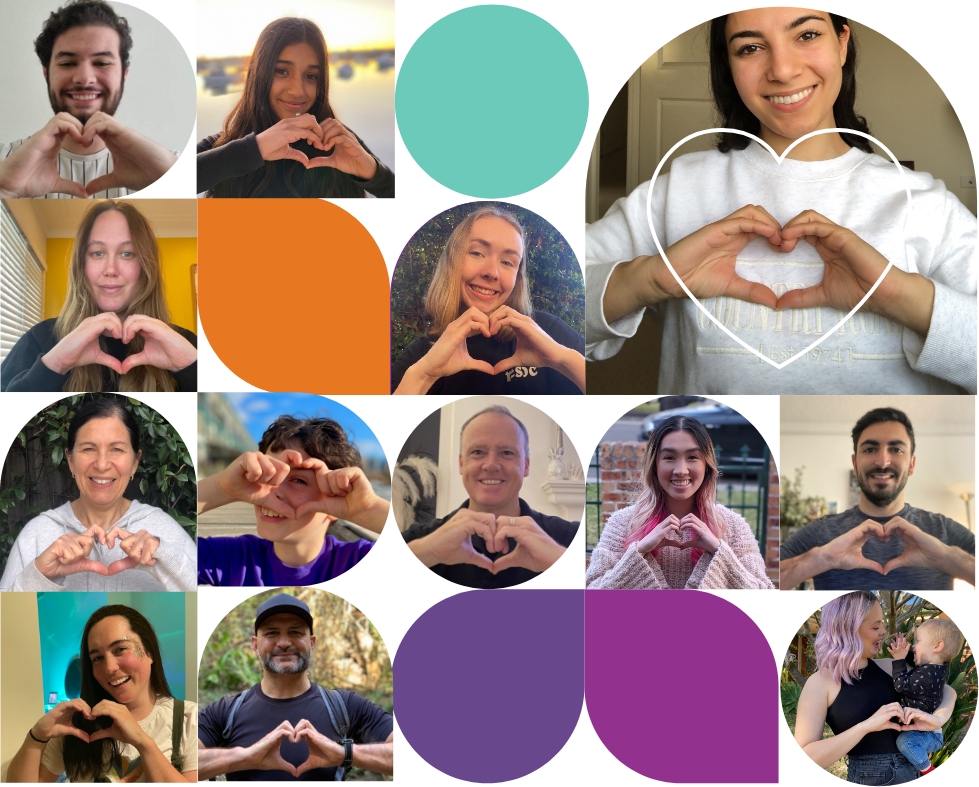
Neurofibromatosis (NF) is a genetic disorder that most people have never heard of. There are three types of NF: NF1, NF2 and Schwannomatosis.
It is estimated that 1 in 2,500 people have NF1 – affecting approximately 10,000 Australians and 2,500,00 people worldwide. NF2 and Schwannomatosis are much rarer conditions. Estimates are that NF2 affects approximately one person per 33,000 people worldwide. Schwannomatosis is the least common and most recently identified form of neurofibromatosis, with estimates of occurrence ranging from one in 40,000 people to one in 1.7 million people.
Approximately 50% of NF sufferers inherit the disorder from their parents. Others show no family history of NF, meaning it has occurred spontaneously at the time of conception. Anyone suffering from Neurofibromatosis has a one-in-two chance of passing the condition onto their own children.
Neurofibromatosis causes tumours to grow on nerve endings throughout the body. It can affect major organs and lead to a variety of serious and debilitating health issues including cafe au lait spots, blindness, bone abnormalities, disfigurement, chronic pain, amputation, cancer, epilepsy, learning difficulties and autism.
Knowledge of NF is incredibly limited – research is needed to learn more about the condition and explore effective treatment options.

Researching for an NF cure – In 2021 Flicker of Hope Foundation committed to a multi-year agreement to support the research being done by Associate Professor Aaron Schindeler for NF. The project is now underway with a team of researchers from The Children’s Hospital at Westmead, Children’s Medical Research Institute and The Australian National University.
With their support, Aaron Schindeler and his team will be able to trial a range of new gene therapy approaches, many of which hold great promise to deliver a lasting cure for individuals with NF1 and NF2.
A/Prof Schindeler has a diverse range of research interests across the fields of medicine, health, and engineering. Key focus areas include the development of novel tools for functional genomics and gene therapy for bone fragility disorders; pharmaceutical modulation of bone healing; bone tissue engineering using novel biomaterials and 3D printing; and treating the musculoskeletal complications associated with Neurofibromatosis type 1.

“My research aims to target major problems affecting children’s health. To accomplish this, I am working to create new tools for understanding the mechanisms of disease and subsequent disease treatment. In some cases, we are repurposing old drugs, in other cases we are designing new drugs as well as new gene editing strategies using technologies such as CRISPR."
“One example of the timeline of such research can be seen in the treatment of the genetic disease neurofibromatosis type I or NF1. Children with this condition have a broad range of complications, but my work has focused on those affecting muscle and bone. Together with my colleagues we found that other drugs used for treatment of non-unions combined with adult osteoporosis drugs could reduce the number of amputations seen in children with crippling bone non-unions. More recently, we found that specific over-the-counter dietary supplements were able to effectively treat muscle weakness in a preclinical model, and this work has now moved into clinical trials.”





